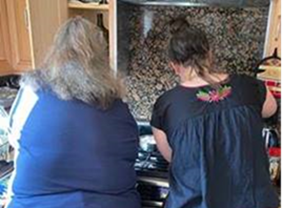This essay, recipe and photos are reprinted with permission from Cooks Without Borders. It was featured at: https://cookswithoutborders.com/new-story/2021/3/23/vospov-kofte
Varty Yahjian first wrote about this mouthwatering dish at Cooks Without Borders on March 24, 2021. Armenian cuisine features many delicious vegetarian and vegan dishes. Vospov kofte is a traditional (and beloved) vegan dish prepared in Armenian and Middle Eastern households at Lent (or any time of year) as part of a light lunch, dinner, or mezze. It’s not only easy to make, but fresh and delicious especially when topped with colorful chopped salad.
Cooks Without Borders editor-in-chief Leslie Brenner was inspired by a recipe given to her by Varty, with ideas culled from others, including <https://slowfoodbeirut.com/armenian-lentil-kibbeh-vospov-kofte/> Kamal Mouzawak,* Lebanon’s Celebrated Restaurateur-Hotelier-Humanitarian, and founder of <http://www.soukeltayeb.com/> Souk el Tayeb, Lebanon’s first farmers market. Varty and her mother Gayane Yahjian prepared this recipe in their kitchen and gave it their stamp of approval. The recipe incorporates healthy red lentils, their flavor is mild, earthy and slightly sweet (compared to the stronger, earthier flavor of green and black lentils).
Here’s an essay by Varty Yahjian:
My mother and I see eye to eye on exactly three things: inappropriate humor, dangly earrings and eating with our hands. (Vehement approval!) Oh, and we both sleep in on the weekends and cancel plans before noon.
Aside from these, it’s hard to find common ground between us, and we widen that distance in the kitchen. There, we disagree about it all. She doesn’t salt food while it cooks, while I think it’s a mistake to wait till the end; I like caramelizing onions, while she thinks it is a waste of time. We do, however, have a common food heritage, one that spans the 36 years between us: We both grew up eating food native to the Caucasus and Eastern Europe.












